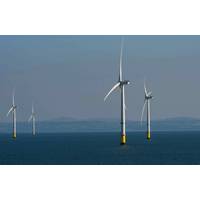What is climate financing and why is it important?
Money is needed by countries that want to switch to clean energy and prepare for the extreme weather conditions, as well as other effects of a warming world. Climate finance is becoming more controversial as the risks and costs of global warming increase. What you should know is:
What is climate finance?
This is all the funding that comes from governments, banks for development, private investors, and philanthropies to help countries reduce greenhouse gas emissions, or adapt to climate impact, such as through projects for renewable energy, or flood defenses.
WHY IS IT IMPORTANT? Without climate financing, poorer nations will struggle to protect their vulnerable populations and decarbonize economies. The 1992 U.N. Climate Treaty determined that these countries should bear less of the current burden because they contributed the least to emissions.
Climate finance is now a litmus-test for international climate negotiations. The amount of money committed by wealthy nations is seen as an indication of how serious they are about solving the crisis.
What are the main disputes?
Today, countries disagree on who should pay for climate finance, the amount needed and how to distribute it. In the past, industrialized nations like the U.S. and Japan, as well as countries in Europe, have made contributions. But now, pressure is increasing on countries that are rapidly developing and high polluting, such a China, India, and Gulf States.
Beijing insists that it should be treated as an developing nation in the U.N. Climate Treaty.
Many developing nations are pushing for more grants instead of loans, despite the fact that they already have high levels of debt. In a World Bank report published in December, the amount of external debt held in low- and medium-income countries has increased by over $205 billion to $8.8 trillion.
Which goals have been set and met?
In 2009, wealthy countries pledged $30 billion per year as the first global climate finance target. In 2010, they increased this to $100 billion in 2020. However, the total amount was not reached until 2022.
Multilateral development banks also announced that they would channel $137 billion of climate finance by 2024. About 62%, or $85.1billion, of this amount went to countries with low and middle incomes. An year before, banks had invested about $125 billion in climate finance. In the COP29 agreement of last year, these two groups were combined to set a new annual target of $300 billion by 2035. The target for the period between now and 2035 is $100 billion, but this assumption is not stated in U.N. documents.
How much money is involved?
Climate funds from wealthy countries are increasingly used as seed money to attract private capital into climate-friendly investment.
Climate Policy Initiative, a non-profit organization, estimates that global climate finance flows will be around $1.46 trillion in 2022. About half of this amount is expected to come from private investments. This will increase to $1.6 trillion by 2023.
At the COP29, in Baku, nations agreed to increase annual funding for developing countries to at least $1.3 billion. Dozens of finance ministers produced a "Baku to Belem Roadmap" with recommendations on how to achieve this.
The CPI estimate that $7.4 trillion per year is required to achieve global climate targets.
The Independent High-Level Expert Group on Climate Finance estimates that the cost of climate finance for developing countries other than China will be $2.4 trillion per year by 2030. This figure will rise to $3.3 trillion in 2035.
What now as countries scale back?
In recent years, rich nations have reduced their development aid as they balance concerns over energy security, economic instability, and competing bills related to war and AI. According to preliminary OECD estimations, overseas development assistance totaled more than $7 percent less last year. The focus is now shifting to ways of attracting more private money through changes in financial regulation, credit ratings, multilateral lending practices, and the creation new financial instruments. Blended finance is one idea, whereby governments and philanthropies accept lower returns or losses so that private investors can join.
Brazil has urged countries to contribute to the Tropical Forests Forever Facility (TFFF), which was launched at COP30. The TFFF aims to raise 25 billion dollars in government and philanthropic funds to mobilize an additional $100 billion private funding. (Reporting and editing by Katy Daigle, David Gregorio, and Simon Jessop)
(source: Reuters)
